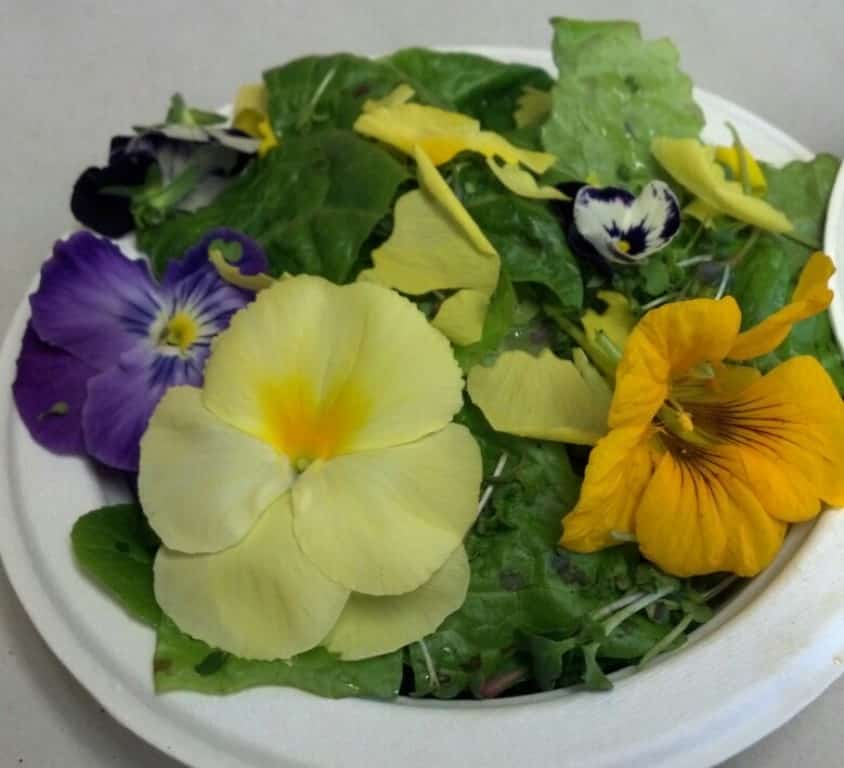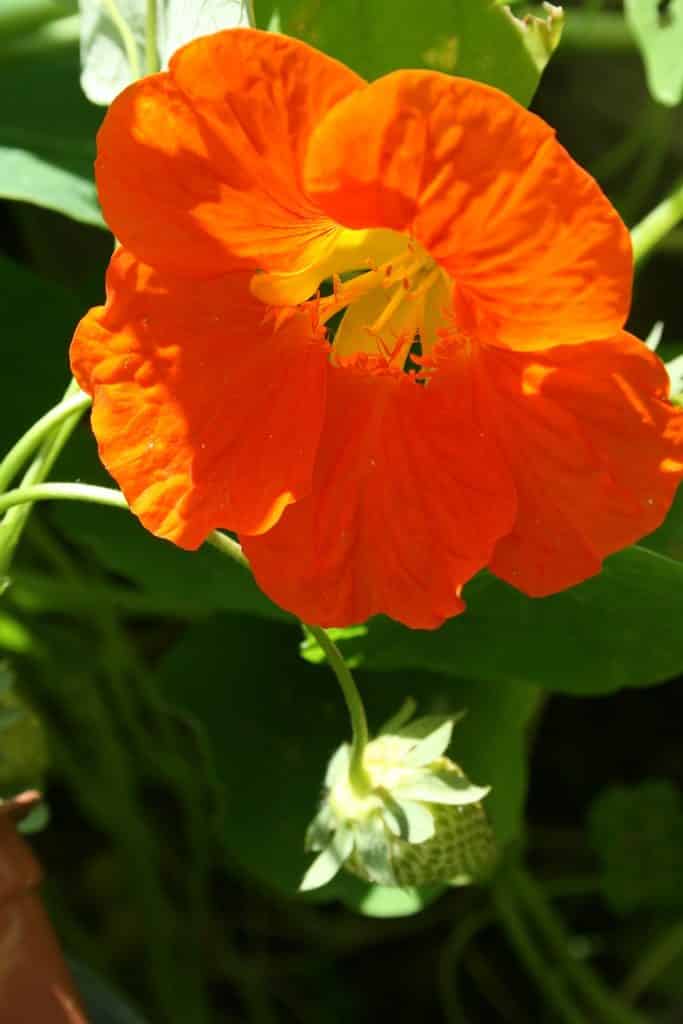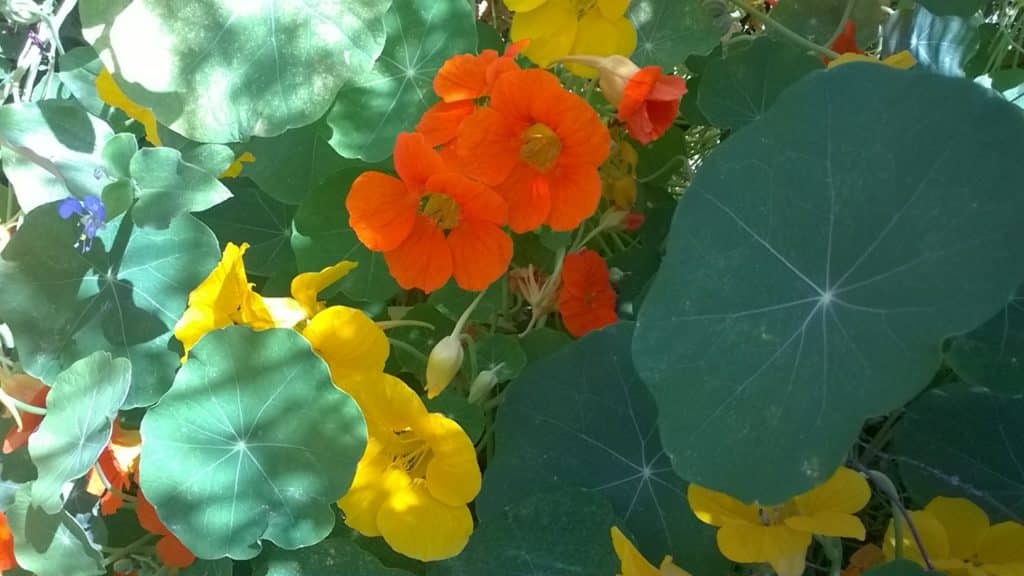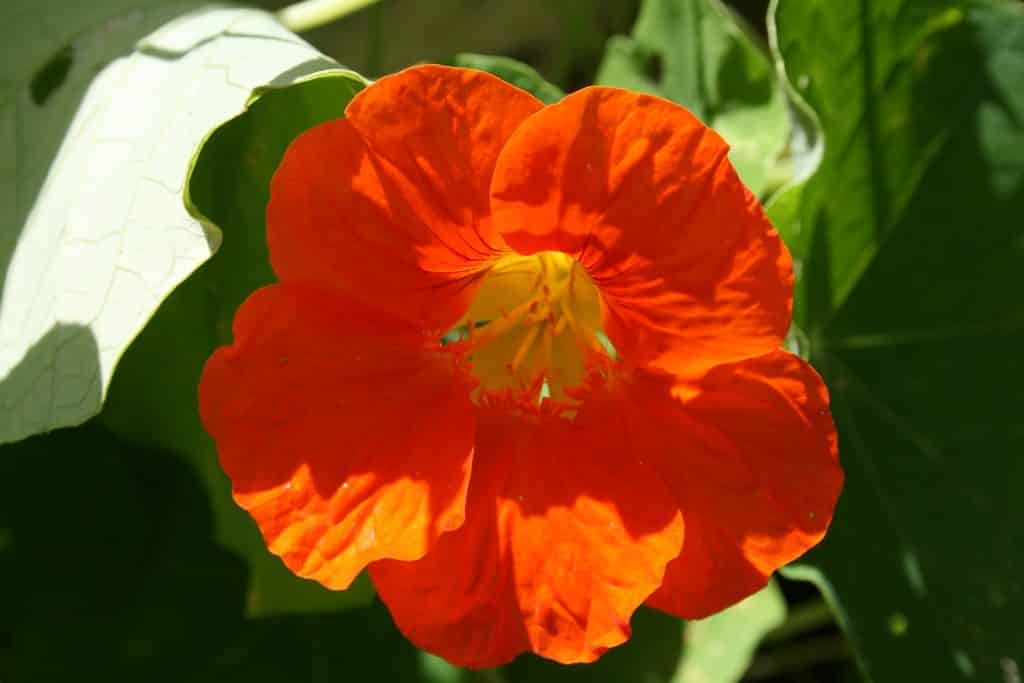One of my favorite hallmarks of spring is the nasturtiums that pop up in my garden. While they light up the landscape from a distance with their brilliant blooms, they also create quite a picture when you admire them up close. I’m always mesmerized by the stunning throats of these flowers, which look as if someone took a fine paintbrush to them.
In addition to making a pretty picture in the landscape, nasturtiums attract bees, and they’re edible. Pop one of these blooms into your mouth, and you’ll find that they taste like radishes. My favorite Easter treat is to stuff their throats with cream cheese flavored with chives. They also make a delightful addition to a salad.
(Julie Bawden-Davis)
Nasturtiums are easy to grow from seed. Simply soak the seeds overnight in water and then nick each seed in a couple of places with a sharp knife before planting. Plant directly in the garden, or pot up in containers and plant out at a later time. They grow in just about any garden soil and will tend to reseed themselves.
(Julie Bawden-Davis)
Keep nasturtiums well watered, as they don’t like to dry out. In the absence of rainfall, water every two or three days during the spring months. Water when the top inch of soil has dried out in the ground and when the top ½ inch of soil has dried out in containers.
(Julie Bawden-Davis)
Nasturtiums don’t require much in the way of fertilizer. They tend to pull what they need from the soil. If you grow these blooming beauties in containers, though, fertilize once during the growing season with an organic food for flowering plants. Feed after they’ve been growing for a month. Harvest nasturtiums for eating in the morning or evening. At these times they tend to be the most buoyant and full of water. At midday they tend to be cycling water, so this isn’t an ideal time. If you will be picking nasturtiums for eating later in the day, place them in the refrigerator in a plastic bag. They will stay perky for 24 hours. Wait until you’re ready to eat nasturtiums before rinsing them. Do so under a gentle flow of water prior to serving. Of all of the edible flowers, nasturtiums tend to hold up the best and the longest.
(Julie Bawden-Davis)
Julie Bawden-Davis is a garden writer and master gardener, who since 1985 has written for publications such as Organic Gardening, The American Gardener, Wildflower, Better Homes and Gardens and The Los Angeles Times. She is the author of 10 books, including Reader’s Digest Flower Gardening, Fairy Gardening, The Strawberry Story Series, and Indoor Gardening the Organic Way, and is the founder of HealthyHouseplants.com.